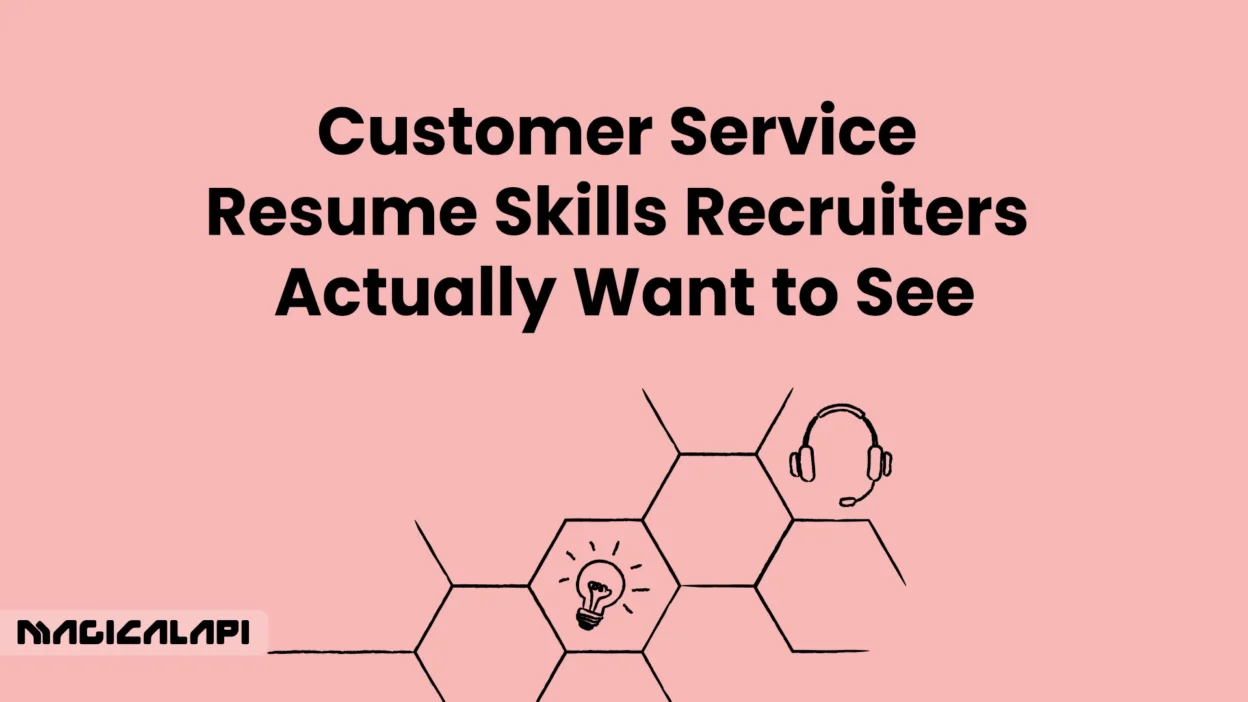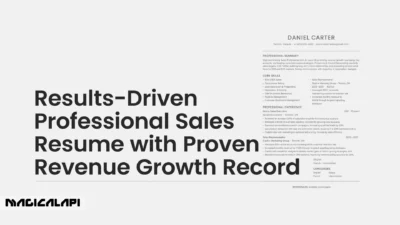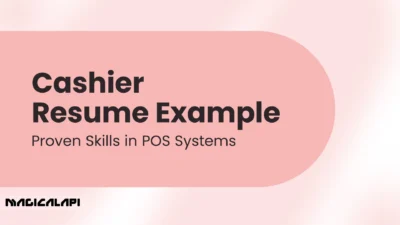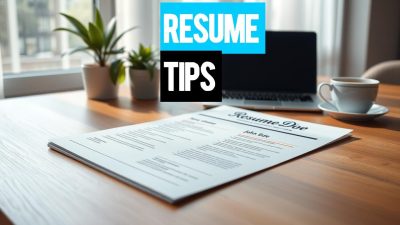Securing your ideal customer service job requires more than just a pleasant demeanor; it requires a resume that translates your interpersonal skills into measurable, business-impacting accomplishments. In today’s marketplace, recruiters will only spend a few seconds on your application (often not even before the first pass of the Applicant Tracking System (ATS).) To break through the clutter, your customer service resume has to be a focused document highlighting the specific competencies and metrics that companies today are looking for.
This guide includes the exact skills, resumes formats, and strategies you need to develop a highly effective customer service resume that will ensure you stand out and get that interview you so deserve.
Table of Contents
What Is a Customer Service Resume and Why Does It Matter?
A customer service resume is a comprehensive professional overview intended to illustrate a candidate’s skills in communication, conflict resolution, client engagement, and product knowledge. In this field, a successful customer service position is 100% dependent upon the interaction with human beings. For this reason, the customer service resume is primarily focused on behavioral characteristics and the measurable impact you can make in this role rather than demonstrating technical experience.
The importance of the resume is that customer service is very frequently the first point of contact when a business engages a customer. The recruiter is solely focused on hiring someone who will not only resolve a problem for a customer but will retain a customer, create brand loyalty, and possibly get a customer to spend even more money.
Your resume is important because you are providing evidence of that ability, with numbers, and additional achievements, before you ever speak with anyone. Your resume is stating, “I have the qualities you are looking for”. It is your opportunity to show that you will not just do the job but will exceed expectations and help answer the bottom line.
Read More: is my resume ats friendly?
Key Skills Every Customer Service Resume Should Highlight
The days of simply listing “good communication skills” are over. Recruiters are now looking for demonstrated mastery of both soft and hard skills, shown through specific accomplishments rather than simple descriptors.
The Core Four: Communication, Empathy, Problem-Solving, and Patience
These essential skills cannot be compromised, but they must be conveyed with an authentic indication of mastery.
- Communication (Verbal & Written): This is all about clarity, tone, and efficiency. Did you simply answer the phones or did you create an email response template to provide clarity and remove the need for a follow up. Recruiters want someone that can show results, rather than just duties.
- Empathy & Emotional Intelligence: The ability to comprehend and share the feelings of another individual is vital, particularly in high-stress circumstances. On your resume this portrays as crisis management and customer retention. For example, I managed 50+ escalated customer conflicts per month with 98% successful ending surveys.
- Problem Solving (Root Cause Analysis): Incredible customer service representatives do not just fix a problem. They fix a problem because they have identified the root cause of that problem, and can ensure a current and future fix or prevention. Be sure to represent that you have had projects that have taken further action than just resolving the request.
- Patience & De-escalation: Recruiters want some assurance that you can deal with an irate customer without escalating the conflict. Demonstrate your ability to maintain calmness under pressure and situations in your previous employment history where you turned a negative situation into a positive situation while lowering complaint filing rates by a specific percentage.
Magical Resume Score
Discover everything you need to know about Magical Resume Score , how it evaluates your resume, and the various options available to enhance your job application and improve your chances of success.
Technical Proficiencies: CRM Systems, Ticketing Software, and Data Tools
Today’s customer service is technology-driven. Listing the right hard skills is critical for getting past the first cut.
- CRM (Customer Relationship Management) tools: List all CRM tools you’ve used, such as Salesforce, Hubspot, Zendesk, or Microsoft Dynamics. If you just used the CRM, say that. If you optimized it, say what was measured when you optimized, for example, “Used Salesforce reporting tools to track the weekly ticket volume and was able to increase staffing efficiency by 10%.”
- Ticketing systems: Add systems, such as Freshdesk, Jira, or ServiceNow. Listing proficiency with a variety of ticketing systems shows you can handle a high volume of requests.
- Omnichannel support: Experience with communication on multiple support channels (chat, email, phone, social media) is a big plus.
- Data analysis and reporting: The ability to pull data for an overall view on customer trends or data on customer feedback (using Excel, Google Sheets, or dashboards), and create actionable reports from that data, is a high-value skill.
Sales and Upselling Abilities (The Revenue-Generating Skills)
Customer service and sales are amalgamated in the work environment of almost every organization. When you emphasize your revenue-generating ability demonstrate that you provide value and are considered a profit-center, and not merely a cost-center . For example,
- Upselling / Cross-selling: Have a measure to share, “Discovered client needs while providing support over the phone and generated, on average, $500 in upsold services a month.”
- Product Knowledge: Let the reader know that you acquired enough knowledge on your company’s products or services to make recommendations. You can also cite specific training or certification programs you completed.
- Retention Strategies: Describe specifically how your particular service made a difference in retaining clients. For example, ” Developed a proactive follow-up schedule for at-risk accounts and reduced customer churn by 7% per quarter.”
Read More: Resume Summary Generator
Translating Soft Skills into Hard Metrics: The Quantifiable Advantage
Recruiters are not interested in reading a list of duties; they want to read about accomplishments. The one thing that differentiates a solid resume from a great customer service resume is the quantification of all claims made; using numbers, percentages, and dollar signs to prove each claim. This approach directly addresses the “skills recruiters actually want to see” because it demonstrates the positive impact on the business.
| Generic Duty (Ineffective) | Quantified Achievement (Effective) |
| Handled customer complaints. | Successfully resolved 50+ technical support issues daily, maintaining a 95% first-call resolution (FCR) rate. |
| Improved team efficiency. | Designed and delivered a new training module for 8 new hires, decreasing their average issue resolution time by 15% in the first month. |
| Managed client accounts. | Oversaw a portfolio of 30 high-value B2B accounts, achieving a 98% client retention rate through personalized service. |
| Dealt with unhappy customers. | Turned around 15+ negative customer experiences per week, resulting in a 20-point increase in the department’s Net Promoter Score (NPS) over six months. |
When writing your bullet points, ask yourself: How many? How much? How often? What was the result? Your job is to make it impossible for a hiring manager to view your work as routine.
How to Write a Strong Customer Service Resume Summary
The professional summary is located at the very top of your customer service resume and is typically the first thing to be read by a recruiter. You must grab the reader’s attention right away; it is essentially an elevator pitch for your career.
Professional Summary vs. Objective Statement
- Objective Statement (Outdated): This conveys what you desire (“Seeking a challenging customer service position where I can use my skills.”). Don’t use this.
- Professional Summary (Necessary): This conveys what you bring to the employer. It is a brief 3 to 4 sentence overview of your best accomplishments and most relevant skills.
Structuring for Impact (The X+Y+Z Formula)
The most successful elevator pitches provide a basic framework that instantly addresses your professional identity, value proposition, and accomplishments.
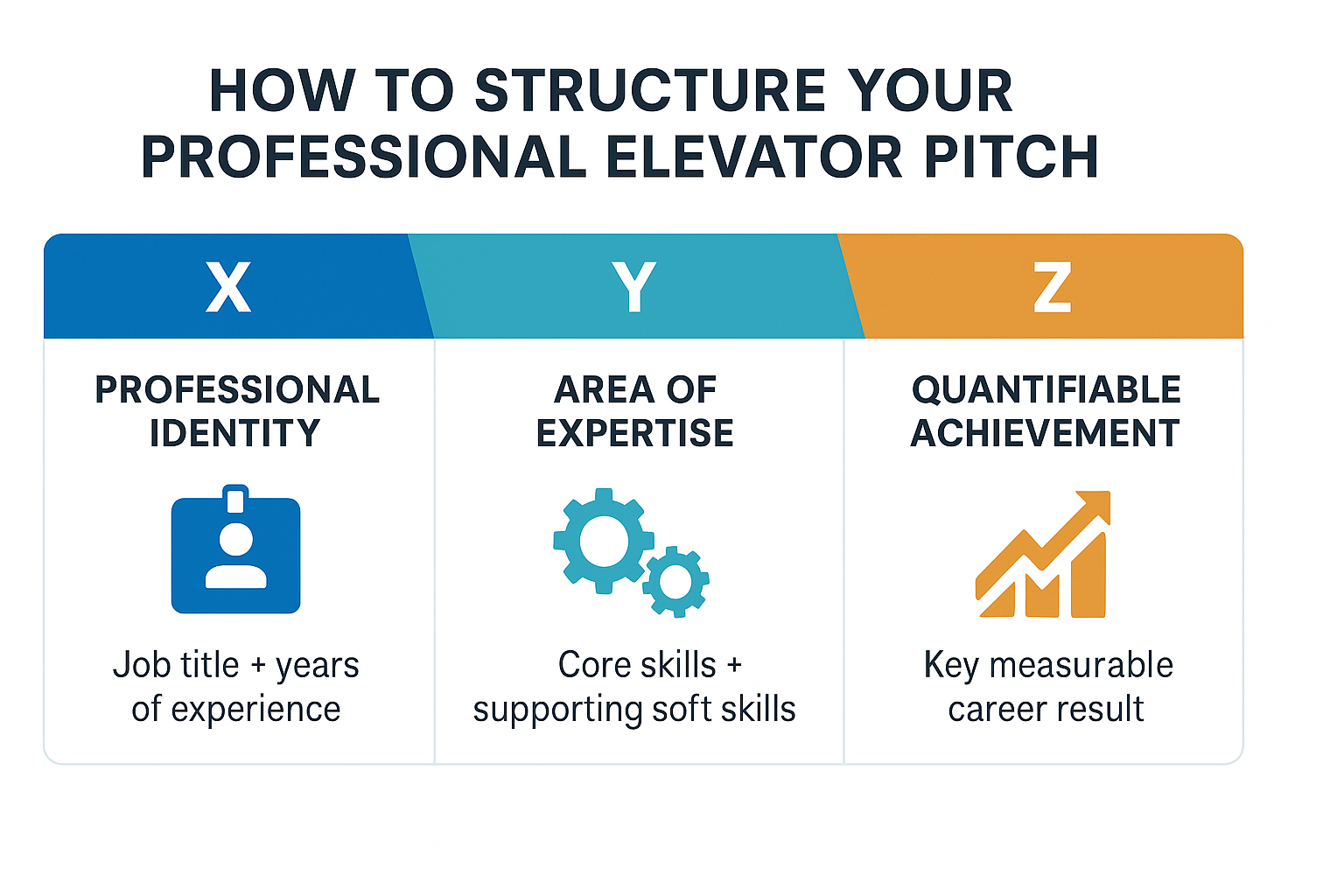
- X: Your Professional Identity & Experience: The best place to start is with your job title and the length of experience you possess that is relevant to the role you are discussing. (Example: A dedicated and results-oriented Customer Service Professional, with over 7 years of experience in fast-level retail and tech support.)
- Y: Your Area of Expertise: Provide your area of expertise and the soft skills that support your area of expertise. (Example: An expert in high-volume conflict de-escalation, CRM Systems (Zendesk), and working in a cross-functional team to resolve complex technical issues.)
- Z: A Quantifiable Achievement: The last part of your elevator pitch is where you can share your best and most quantifiable career accomplishment in the space you are discussing. (Example: I routinely exceed monthly KPIs, with an average CSAT (Customer Satisfaction) rating of 96%, and my metrics help contribute to a 12% ticket backlog reduction quarterly.)
Top Action Verbs for a Customer Service Resume
- Action verbs breathe life into your bullet points, converting passive representations into active achievements. Action verbs are the essential element of a successful and high-impact work experience section.
Verbs to Use for Conflict Resolution and Customer Service
These verbs can communicate how you handled uncomfortable situations and kept clients loyal.
- De-escalated: “De-escalated 40+ irate calls during each shift, staying calm and professional, achieving a 90% resolution.”
- Resolved: “Resolved Level 2 technical issues with the software user, reducing escalation to engineering by 25%.”
- Mediated: “Mediated payment disputes between clients and the billing department to recover $15,000 on overdue accounts.”
- Reconciled: “Reconciled customer order discrepancies, maintaining 100% accuracy and restored client trust after shipment error.”
Verbs for Efficiency and Process Improvement
These verbs indicate you are working to improve systems and to help the Company save time or money.
- Streamlined: “Streamlined the returns process by creating a digital tracking process, allowing processing time to reduce by 30%.”
- Optimized: “Optimized template library in Salesforce, with an average email response time improvement across the team of 15%.”
- Trained: “Trained 10 new hires on product knowledge and support protocol, which resulted in their Resume Score assessments increasing 5-points.”
- Initiated: “Initiated creation of a knowledge base article project, which resulted in a decrease in self-service inquiries by 5%.”
Verbs for Sales and Client Growth
Use these action words if your task involved any aspects of revenue generation or account expansion.
- Increased: “Increased customer adoption of premium features by 18% through follow-up from the sale and demonstration of features.”
- Grew: “Grew client renewal rate by 5% through proactive outreach and service check-ins that were personalized.”
- Identified: “Identified up-selling opportunities during service calls that generated $25,000 additional revenue on an annual basis.”
- Converted: “Converted 10% of trial accounts into paid users by delivering expert product training and support.”
If you have difficulty framing the words, consider using facilities that can help you phrase your achievements. You want to use an appropriate word structure, especially when you are trying to improve your Resume checker score, because Resume checker tools look specifically for weak or generic wording.
Magical Resume Checker
Discover the full potential of the Magical Resume Checker and explore the various options available to enhance your resume, optimize it for applicant tracking systems (ATS), and improve your chances of landing your dream job.
Best Customer Service Resume Examples and Templates
Looking at real-life layouts and content should help you envision how to apply the recommendations above into an actual document. Different industries have their own quirks, but the basic principles of structure and quantification remain. Below are some breakdowns of what is effective across different experience levels and generally what most of you are specifics of useful customer service resume examples.
Entry-Level/No Experience Example Breakdown
When there is a lack of direct experience, you can rely on transferable skills gained from work experience (retail, volunteering, education, or freelance posts).
- Focus: Skills and Education before Experience
- Strategy: Create a ‘Relevant Experience’ section. Highlight part-time jobs, school projects, or volunteer roles where you exhibited core customer service competencies (handling money, scheduling, communicating under pressure etc.).
- Transferable Skill Focus: Highlight the great ability to help work on a team, manage competing deadlines, and use POS or inventory software.
Example Achievement (From Retail work):
“Managed high-volume customer traffic and point-of-sale transactions during peak holiday seasons, handling an average 100+ transactions per day with zero cash handling discrepancies.”
Experienced Representative Example Breakdown
This is where quantification becomes a must. If Recruiters do not immediately see numbers in this section, they will skip over it.
- Focus: Achievements AND Impact
- Strategy: Again, use 80% quantified bullet points. #1 – Specify your scope of responsibility (number of customers supported, volume of tickets supported), and #2 – what was the result of what you did (improvements in efficiency, increased score on an evaluation).
- CRM/Technology Focus: Use system proficiency in every bullet point whenever applicable.
Example achievement:
“Provided technical support for a user base of 5,000+ B2C clients through phone, email, and live chat; maintained consistent CSAT rating exceeding 97% for two years.”
Customer Service Manager Example Breakdown
A resume for a management role should concentrate on leadership, strategy, and team development, instead of on individual performance.
- Focus: Leadership, Strategy, and P&L Impact.
- Strategy: Emphasize team management (the size of team, coaching methods for teams), process improvements, and financial metrics associated with the position (cost savings, improved operational metrics).
Example Achievement:
“Managed a team of 15 remote customer support agents and introduced a new QA framework leading to improvement in team performance metrics, such as a 15% reduction in average handle time (AHT) and a $8,000 monthly reduction in labor costs for the department.”
Mastering the Art of the customer service skills resume Section
An effective dedicated skills section in your customer service skills resume is important for ATS screening and for quick processing by a recruiter. It’s important that you clinch this section so that the relevant abilities are emphasized while also avoiding repetition of content from the experience section.
How to Effectively Structure the Skills Section
Do not put down just one, giant block of text. Organize your skills around these three categories:
- Core Customer Service Skills (soft skills): You will want to note key behavioral characteristics outlined in the job description (e.g., Conflict Resolution, Active Listening, Adaptability, Cross-Cultural Communication).
- Technical / Software Skills (hard skills): List out all relevant technologies and tools to include previous tools referenced by the recruiter (e.g., Salesforce, ServiceNow, Intercom, Microsoft Office Suite, SQL Basics, VoIP Systems).
- Industry Skills: Note knowledge related to that company or industry that is specific in nature (e.g., HIPAA Compliance, Retail POS Systems, Financial Services Regulations, ITIL Foundations).
Prioritization Based on the Job Description
The organization and content of this section should be customized for each job application. If a job description states, “heavy use of Zendesk and Spanish fluency,” make sure to have both of those items listed at the top of your technical skills section. Feel free to use the job description to help you organize, and customize your resume for each application, ensuring that your resume says exactly what the company is saying in their job description.
How to Tailor Your Customer Service Resume for ATS Systems
The Applicant Tracking System (ATS) is a software program used by 99% of Fortune 500 companies to screen and rank resumes before a human even sees them. Your well-crafted resume is useless if the Resume Parser cannot read it.
Formatting For ATS Compliance
- Keep Formatting Simple: Do not use heavy graphics, colored backgrounds, text boxes, tables, and special font choices. Stick to the sections that most employers call, like “Experience,” “Skills,” “Education,’ and pick a standard font like Calibri, Arial, or Times New Roman.
- Keywords Rule: The ATS is programmed to look for keywords from the job description. For example, if a job description asks for a “Client Success Specialist”, put that in there, not just “Customer Service Agent” wherever it fits in your resume.
- Use Standard Section Headers: The Resume Parser is programmed to read standard section headers. Use “Work Experience,” “Skills,” and “Education,” instead of something creative like “My Journey,” or “What I Do.”
- Saving in a PDF (With Caution): Years ago, ATS preferred .doc files to open files, but since then they have evolved, and PDFs are now generally fine as long as the system reads the file without ever screwing the formatting. But, if the application is specific about a .doc file then listen to that direction.
The Keyword Matching Imperative
Don’t just list the skill. If the job posting states “Agile environment,” use “Contributed to weekly sprints, in an Agile environment” in the experience section of your resume.
The contextual use of keywords displays relevance to the job you are applying for and helps significantly improve your ATS ranking score. Finally, before you submit your resume, it is always a good idea to run your document through a final check; you can use a Resume checker or similar tool to ensure all components are included.
Leveraging Technology: How to use ai to write a resume and Optimization
With advancements in technology comes new ways to build a resume. Job seekers more and more are wondering “How to use ai to write a resume?” The short version is, AI tools can be effective co-pilots, but they will not make the decisions for you.
Using AI as an Authoring Tool
AI tools can help in several key areas:
- Authoring quantified bullet points: Enter your raw experience (“I took support calls and resolved technical issues”) and the AI will create quantified, action-oriented bullet points based on your input (“Resolved an average of 65 support calls per day, achieving a 92% first-contact resolution rate, using Zendesk.”)
- Tailoring to job descriptions: You can put in a job description and your current resume, and have the AI suggest keywords swaps and section changes to maximize your ATS score.
- Writing the summary: AI is excellent at quickly summarizing your work history into a summary that is concise and makes an impact.
The Pitfalls of Over-Reliance: AI Resume Optimization: Revolution or Risk?
Although AI develops incredible speed, it comes with some considerable risks:
- Generic Content: You may submit your fully AI-generated accomplishment without heavy editing or personalization. As a result, your accomplishments will sound robotic or generically like thousands of other applicants, erasing the authentic, customized tone that recruiters look for in a value proposition.
- Misinformation: AI can incorrectly “hallucinate,” or even worse, puff up its metrics. Any and everything that you have accomplished , that is AI-generated, needs to be run through your fact checking and verification.
- Loss of Voice: Customer service is a “people job.” You need your resume to convey warmth and personality that pure AI-generated text can struggle to do.
- The question of AI Resume Optimization: Revolution or Risk? comes down to “am I using this tool to amplify my voice or use my voice?” Think about AI as an editor and not a writer.
Common Mistakes to Avoid on a Customer Service Resume
Recruiters are keen to find reasons to throw out applicants because the volume of applications is so great. So avoiding these typical things is as important as mentioning your best skills too.
- Ignoring the Job Description: A resume that looks generic is a disqualifying reason right off the bat. Every application must look tailored. So, if the job description asks for proficiency with “ticketing systems”, you don’t want to list, “I have computer skills.”
- Weak or Passive Language: Avoiding phrases such as “Responsible for”, “Duties included”, “I was tasked with.”,” Always start bullet points with a strong action verb.
- Just Duties: Not Accomplishments: This is the most common mistake of all. A bullet point stating, “Answered phone calls and responded to customer emails,” is a duty. A successful bullet point states the accomplishments from answering calls.
- Poor Formatting: Recruiters look at poor attention to detail for suspicious reason. Dates, font size and style bullet points need to be perfectly consist across the resume. Perform a detailed date to be sure any internal audit tool the hiring company might be using gives you a high Resume Score.
- Photos: unless you are applying in a country where it is the standard (rarely in England, Canada, and the US), for the most part, photos are unprofessional, lead to bias, and waste valuable space.
The Final Polish: Ensuring Your Resume is Error-Free and Optimized
The final step in creating your resume is not to add more content; it is about refining what you have already crafted. A single typing or grammar error can instantly create an appearance of sloppiness that is the polar opposite of good customer service.
Proofreading Techniques
- Read it Aloud: Using out loud to proofread your resume takes you out of your head to slow down and find awkward phrasing, run on-sentences, or missing words spell-check may not catch.
- Print it Out: The brain processes information differently when it sees information on paper instead of the screen. Printing your resume will often show you little errors or poor spacing you would have otherwise missed.
- Second Set of Eyes: Ask someone you can trust like a friend or mentor to look at your resume for clarity and tone; this should be someone who works in Human Resources and/or recruiting if possible.
- Digital Applications: Use your word processing software spelling/grammar check, and if possible, take it a step further with a dedicated application such as a Resume checker to review your strength of language use and format before submitting. Scoring well on an application like this can bring you confidence that you are presenting yourself to your best advantage.
Read More: Resume Screening Checklist
Customer Service Resume Tips to Stand Out in 2025
The customer service environment is dynamic and constantly adjusting to new technologies (such as chatbots & personalized data). In order to keep your customer service resume up to date, attempt to focus on skills that are likely to be future-proofed.
- Digital Fluency: Highlight skills in engaging with AI and machine learning (for example, if you trained a chatbot, added to your experience) or managing complicated digital self-service platforms.
- Focus on CX (Customer Experience) Vs. CS (Customer Service): As mentioned above, recruiters are shifting to recruiting individuals who look at the entire experience journey, rather than just the support aspect, therefore, incorporate the terms “Customer Experience” or “Customer Journey Mapping” into your skills.
- Flexibility and Remote Employment skills: If you worked a customer service position remotely, be sure to showcase your ability to self-motivate, stay on task independently, and communicate effectively in video conference format to demonstrate you were trustworthy in a remote working environment.
- Bilingual / Multilingual Skills: This is still one of the highest valued skills in the industry. Be sure to highlight your communication skills clearly and accurately.
Conclusion: Winning Customer Service Resume
To sum up, a winning customer service resume is not a chronicle of your exact work history; it is a highly-focused marketing document. By emphasizing the actual skills recruiters are looking for, quantifiable accomplishments, technical tool proficiency, and specific customer service terminology, you distinguish yourself from the mundane applicant pool.
Remember to use strong action verbs, include metrics for impact, and optimize your entire document so that it passes the ATS. By following these steps, you will have a resume that gets you the interview and positions you as a high-value asset for customer loyalty and business development.
FAQs about customer service resume examples
1. Should I include a list of my character traits (e.g., dedicated, hard-working) on my customer service resume?
No. Instead of telling the recruiter you are dedicated and hard-working, you should show them through your achievements. For example, rather than writing “Dedicated employee,” write, “Achieved 100% attendance and punctuality for two years straight while cross-training in three departments.”
2. How far back should my work history go?
For most professional roles, stick to the last 10 to 15 years of relevant experience. If you have older experience that is crucial to the role, you can summarize it briefly, but focus the bulk of your detail on your most recent and relevant positions.
3. Is a one-page or two-page resume better for customer service?
For entry-level and most mid-level roles (under 8-10 years of experience), stick to one page. If you are an experienced manager, specialist, or have a long, detailed work history with complex achievements (which is often the case when trying to fill a 4000-word guide with details), a well-organized two-page resume is acceptable, provided the content on the second page is equally impactful and relevant.
4. How do I list non-traditional customer service experience, like freelancing or volunteering?
Create a section titled “Relevant or Transferable Experience.” List these roles with the same quantified, action-verb structure as paid work. Focus on skills like client management, expectation setting, and problem-solving.
5. I have a low GPA from college. Should I include it?
If you are more than a couple of years out of school, you do not need to include your GPA. Focus on professional experience and certifications. If you are a recent graduate, only include your GPA if it is 3.5 or higher.


